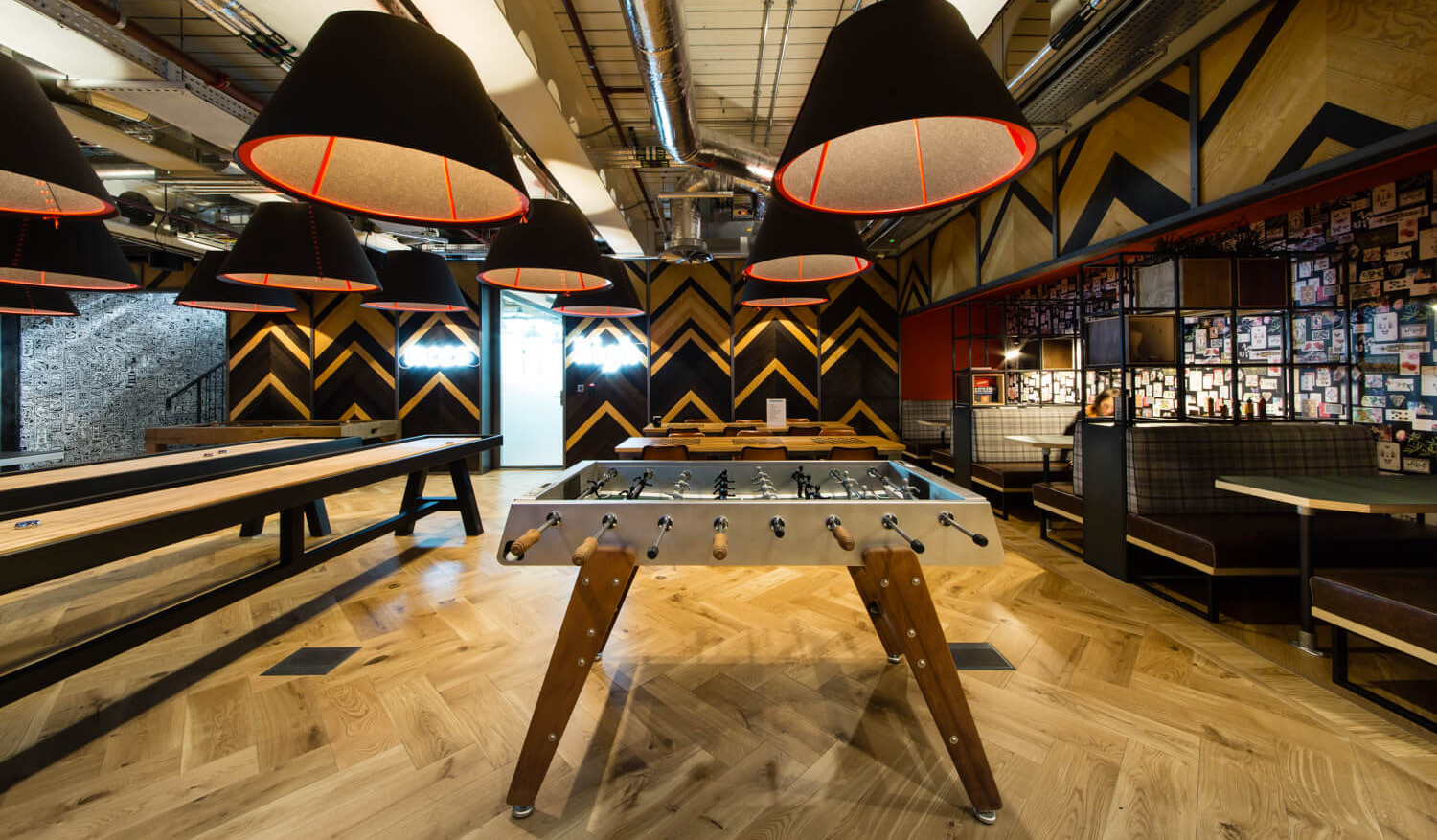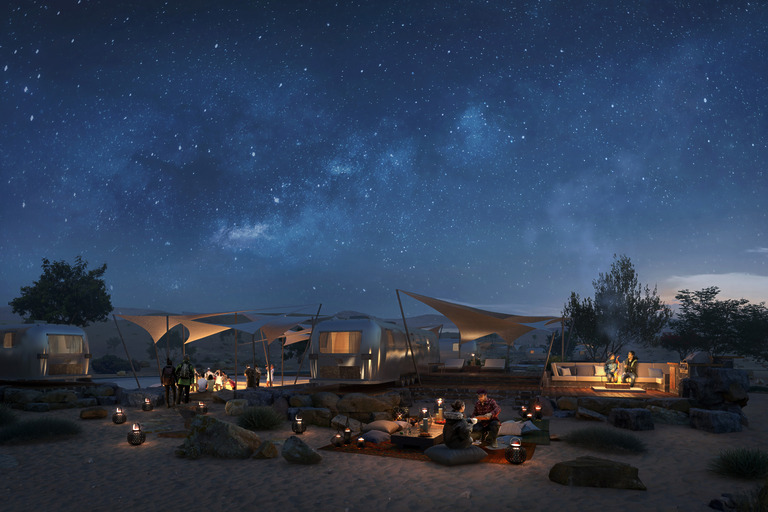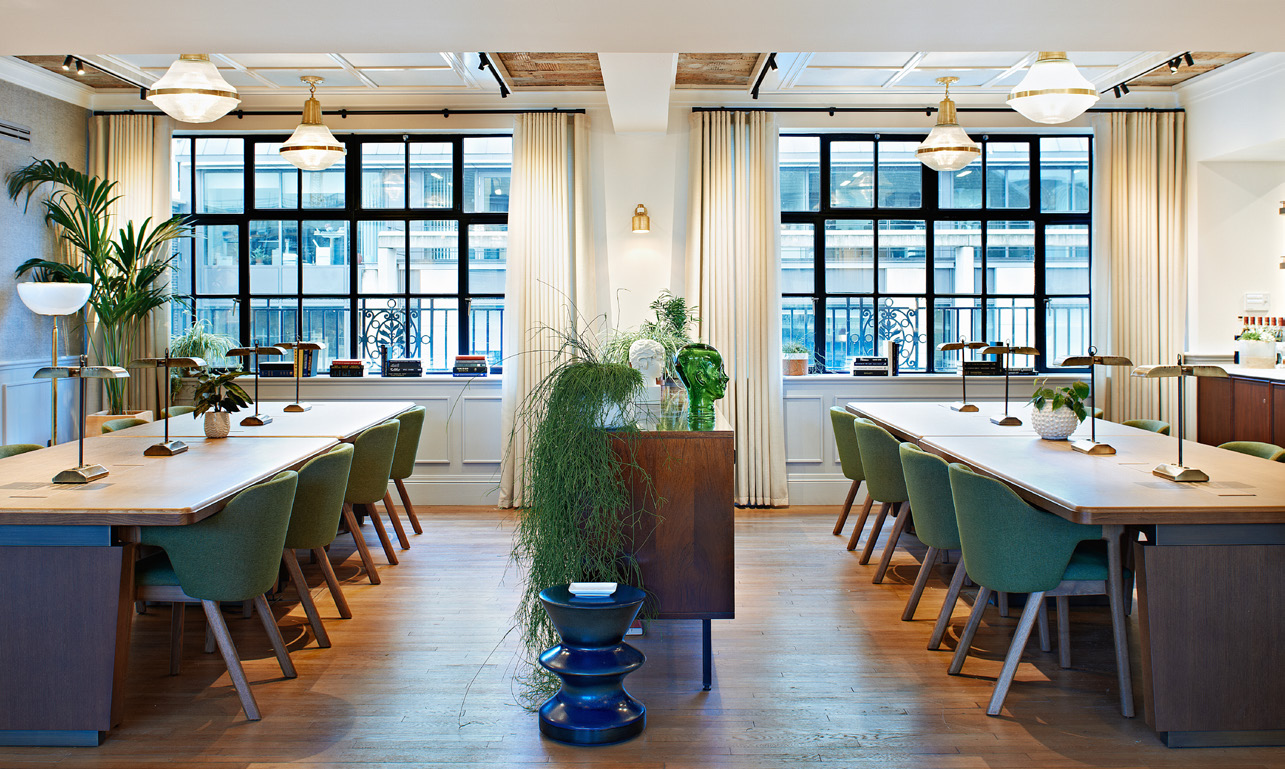Working Nine to Thrive: The Evolution of the Workspace
By WATG
March 15, 2018
The workspace of the 21st century is constantly evolving. With a new generation of workers eschewing traditional working models for flexibility and independence, they now demand a workplace not just for productivity, but for improving their wellness and community too.
According to new research released today by global hospitality design firm WATG, workspace developers have begun to address this concern. WATG’s report Working Nine to Thrive examines the complexity of this contemporary issue, crucially addressing the way the hospitality industry has come to influence the services provided in corporate environments, with emerging synergies between the two. The white paper delves into the growth of co-working as a productive alternative to traditional freelancing, investigating what kind of spaces this trend creates and why they have become so successful. Senior Associate’s Richard Collings and Rob Sykes at WATG lay out the way workspaces are being redefined:

WORKSPACE AS A SERVICE, NOT A COMMODITY: Office spaces are now let not only to corporate tenants but also to a host of other hotel-like services, supporting workers onsite in their professional and personal lives. The upcoming skyscraper Twentytwo in Bishopsgate, London, will incorporate over 100,000 sqft of amenity and recreation spaces for its 12,000 workers, ranging from a gym and wellness centre to a lobby that’s an art gallery.
WORKSPACE AS AN EXPERIENCE: Softer, engaging environments are designed with a touch of flair to make them distinct and offer workers something more than a clinical office environment. Activity Based Working (ABW) has meant employees are increasingly encouraged to stay active, creating and relaxing together to boost empowerment and productivity.
WORKSPACE WELLNESS: With the launch of the WELL Building Standard in 2014, developers are keen to address potential health concerns for their tenants. Wellness can be addressed by on-site gyms with trainers and group classes but can extend to better categorisation of spaces within the building. Mortimer House in London has a layout inspired by the “hierarchy of human need,” fostering a sense of belonging and community amongst its members.
FREELANCERS AND THE (S)ME GENERATION: With 1.2million coworkers registered globally, the boom in start-up culture has meant smaller, shared workspaces are more in demand than ever. Urban lifestyle hotels have unintentionally become a popular template for this style of working, with large ground floor environments no longer seen as exclusive to guests. These animated environments create a buzz for the hotel as a destination but often make it hard to capitalise on the prime real estate.

THE WORKSPACE THAT PLAYS TOGETHER, STAYS TOGETHER: Coworking spaces have drawn on the best aspects of modern hotel lobbies, but with a paid membership model. The community benefits of these spaces are huge, with higher productivity, worker satisfaction, lower stress levels and the demise of the work ‘persona.’ Softer furnishings and thoughtfully designed spaces represent a members’ lounge more than a traditional office, helping forge relationships in tranquil intimate settings. Mortimer House selects their members based on attitude, not profession, and values sustainable communities enough to require a minimum 12-month commitment.
A HOTEL FOR WORK: Emulating the private work studies model found in London, Zoku Lofts in Amsterdam provide a contained living unit that doubles as a productive office space. The beds are tucked away behind screens which transform the space into a studio, providing more professional meeting spaces to independent workers that were previously hard to come by. Co-founder Hans Meyer describes Zoku as “a hybrid between a home and an office, topped with hotel services.”
MAKING THE NUMBERS WORK: Many hotels rely on making their revenue in the busy evening and overnight period. Yet coworking offers an opportunity for them to monetise on the otherwise quiet daytime. The Collective in West London opens up its working spaces to the local community in the day, when residents in its co-living accommodation are off-site, a strategy that helps some businesses achieve occupancy levels above 100%. Co-working pioneer WeWork benefits from economies of scale in its rapid expansion, centralising services to offer lower costs to its tenants.
“From a design perspective, the opportunity to deconstruct traditional office space and hotel public areas, and create environments that work for the developer, operator and end-user is ripe. The way that we work, travel and play is changing. WATG is passionate to be at the forefront of this.” – Richard Collings and Rob Sykes, WATG
Download – WATG Strategy Paper – Working Nine to Thrive
Latest Insights
Perspectives, trends, news.

- News |
- Trends
Interior Design Trends 2025: Emotional, Experiential, and Environmentally Conscious Spaces

- News |
- Trends
Interior Design Trends 2025: Emotional, Experiential, and Environmentally Conscious Spaces

- Strategy & Research |
- Trends
2025 Outlook: WATG Advisory predicts the top hospitality trends.

- Strategy & Research |
- Trends
2025 Outlook: WATG Advisory predicts the top hospitality trends.

- Employee Feature
Unlocking Value & Vision: Guy Cooke & Rob Sykes Discuss WATG Advisory’s Bespoke Approach

- Employee Feature
Unlocking Value & Vision: Guy Cooke & Rob Sykes Discuss WATG Advisory’s Bespoke Approach

- Case Study |
- Design Thinking & Innovation
In Conversation: Marcel Damen, General Manager of Rissai Valley, a Ritz-Carlton Reserve

- Case Study |
- Design Thinking & Innovation
